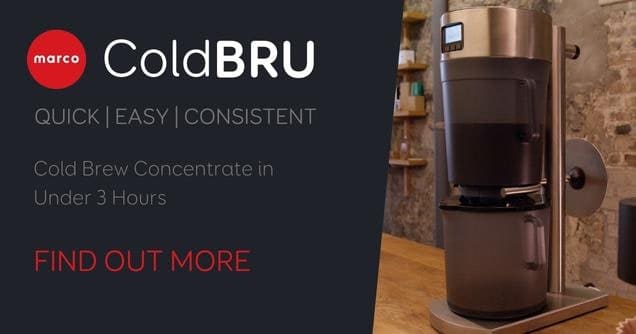
What is the value in companies truly ‘knowing ’ their customers?
I have a mantra: ‘every yes begins with a know’. It’s about knowing your customer, not saying ‘no’ to them. In today’s world, and especially if you’re selling a commodity-type item then you really have to provide value or customers will simply make purchases based on price alone. To provide value, it’s important to understand what’s going on in another person’s world in order to have more relevant conversations. Too often, sales people have the idea they’re simply going to present all of their new products without having done any homework. They might not say “well, I don’t know which products might work for you, but let’s figure it out together,” however, that’s certainly what the buyer hears. On the flip side, if you really understand what is going on in your customer’s world ahead of time, you gain permission to ask more in-depth questions that really get to the bottom of what they need.
What are some steps that consultants in particular can take to get to know their customers better?
Again, it’s all about knowing your customer ahead of time and doing some research, even if it’s for a regular client. You might start off the conversation by saying, “I saw a newspaper article about your new restaurant promoting such-and-such food,” and then parlay that into a conversation about what kinds of equipment might work to support that. No one wants to hear: “Tell me about your restaurant,” as the first question in a meeting. That’s homework 101, and certainly doesn’t work in today’s world, when we’re all pressed for time. Maybe something you can do is offer some intel into other competitors and what their plans are. Say you did some research and saw that there are two other brands entering the marketing within the next six months. That helps your clients think about how they want to differentiate themselves in the marketplace.
You advocate researching online about customers in order to build a meaningful connection. How do you do that without seeming to be a stalker?
It’s great to make more of a personal connection by looking at the client’s LinkedIn page or other social media accounts, but you don’t want to use that information upfront as fact. You want to use it in order to ask good questions or simply establish a good rapport. For example, you might know the person loves skiing and you also love skiing. If they ask a little about you, maybe you’ll throw out that you love skiing, knowing they do too, and that might lead to a separate conversation. This sounds manipulative, but it’s not, as long as you’re showing genuine interest in the other person’s interests.
What are the biggest challenges brands face in understanding their customers?
Prospecting is one of the most challenging tasks for sales professionals and consultants. It’s all about finding the right person to talk to in the beginning. For many years in the sales industry we relied on referrals, but that doesn’t work anymore. If I ask my clients: ‘Do you know anyone who might want to work with me?’ that’s a little annoying because it implies time and work on their end. But if I see that one of my clients sits on the board with someone else who might be interested in my work, and we have had a good conversation already, I might kindly ask for that person’s contact or to make an introduction. If my client and I already have a good rapport, I would guess that 99.9% of the time that person will most certainly offer the referral.
As a partner at Contata Solutions, a machine-learning provider, you developed a Sales Intelligence Search Engine. How can Symposium attendees use the algorithms you have developed?
We’re excited to be offering all the FCSI Symposium attendees a complementary trial run with our Sales Intelligence Search Engine so they can test it out and see if it works for them. We think of the algorithm as a Google Search Overlay. For example, if you were trying to locate the top kitchen equipment purchasing people at Marriott Hotels, and you simply Googled “Marriott” and “kitchen,” you would get 51.3 million results with the first, say, 10 pages, all related to the website and marketing material. Let’s say you entered “Marriot hotels” and “kitchen,” well you just drilled down to 5.2 million results, which isn’t much better. Now, say, you log into our proprietary system and type “Marriot,” “purchasing” and “kitchen.” In eight seconds, you’ll be able to see the 23 people at the company responsible for purchasing kitchen supplies. Our algorithm also makes it possible to find relative news, reports and documents around certain food trends or types of food that can also be used as a conversation tool. You can also use our system to pull up directories of certain industry boards in just seconds.
Why did you decide to present pre- and post-keynote speeches?
In my morning speech, I will be discussing this idea of how to get to know your clients better. But in the wrap-up speech, I will turn it back to the attendees and ask, how well do you know digital yourself? Do you know what people see if they Google or “spy” on you online? This conversation will be all about digital reputation management and how to control your own message and digital brand.
Why are you so passionate about this topic?
Why does it matter? Believe it or not, sales was the last thing I ever thought I would do. I started out as an advertising writer and got promoted to creative director and suddenly had to go out and sell. I’m an introvert, so this was initially difficult for me. But I do like to sell stories and attract people to products and ideas so I have found that the more personal connections I can make with people, the more my introverted feelings melt away and the more comfortable people feel talking to me. With the right questions and connections, you can break down that wall between buyer and seller and form real partnerships.
More information:
samrichter.com
Amelia Levin




